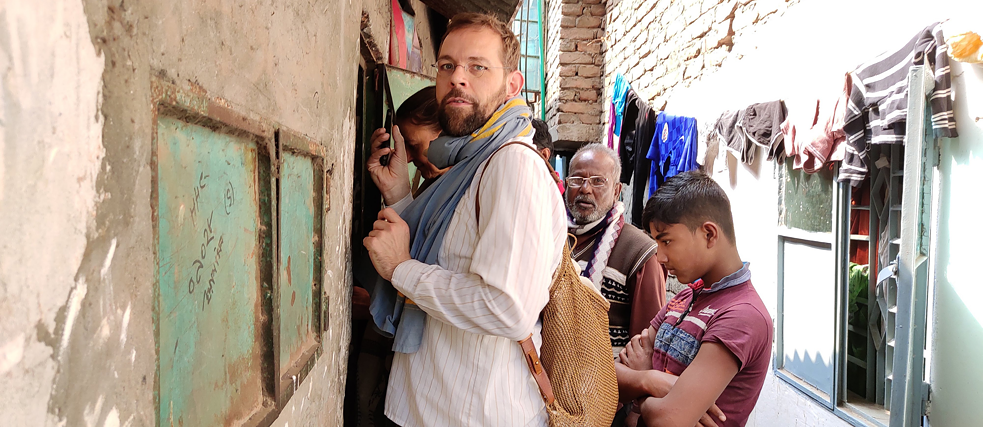Forms of Future collaborations in Handicrafts

A reflection on the future of handicrafts
By Thomas Kilian Bruderer
During several of my research trips on textiles into the less westernised regions of Mexico and Bangladesh, which still have fairly intact structures for producing handicrafts, I met many highly creative and especially incredibly dexterous personalities. These meanwhile partially difficult-to-find masters of their craft keep the important knowledge of their cultural heritage alive. However, they are gradually being supplanted by globalised production and find themselves positioned more as producers of niche products in the fast-living, capitalistic global markets, where prices are knocked down to the minimum (and therefore also to minimum wages).
There are indeed schemes, such as the Cultural Heritage Fund of the United Nations, private organisations or NGOs, which seek to prevent the incessant decline of these traditions. However, from a long-term perspective, the drive to achieve a western standard of living and the dream of a supposedly better life with more money and higher consumption appears to be unfortunately winning out. It should, however, be possible to integrate all these concepts of life.
Are the tradition-rich methods to create certain products still in keeping with the times or must they yield to the driving rhythm of the globalised economy and eventually completely die out because of it?
I was born and brought up in Switzerland. Though, I grew up in a middle-class family, preference was usually given to high quality products over the cheaper versions. Common household items were repaired or upcycled when they reached the end of their life cycle. I am certain that this value had a lasting impact on me and influenced my journey through life. I have been living in Berlin for the last decade and I notice that the decision for whatever lands in the shopping basket is usually based on the price. I don’t know whether this is fundamentally an attitude of „Cheap is cool“ or due to the lower income in this region.
However, this difference is always noticeable and is naturally based not only on a mindset but also on the actual economic resources of each person. Despite all this, it is striking that in the rest of northern Europe, the market for artisanal and high-quality goods is again experiencing a tentative growth. This could be due to the increasing absence of classical handicrafts in the highly industrialized and digital worlds of the western consumer societies – as the handicrafts cannot compete with the price level of low-cost production.
But it may also be a romanticizing of the sturdy, tangible crafts and a longing for the old ways at a time when human beings are slowly turning into soulless recordings of the mainstream media.
To this end, these social trends should be taken seriously, politically supported and favourable conditions should be created to preserve the handicraft trade before it dies out and is inevitably forgotten. This includes gathering and – more importantly – the transfer of traditional knowledge in schools, solid support of the still existing handicrafts and the organisation of sales channels for the goods produced without which there is no incentive for the often immensely complex work cycle.
However, one can often hope for and create more avenues with the flexibility and adaptability of the crafts persons. In my personal experience, these are the domains that are usually very open to making modifications for modern requirements. For instance, the more easily available synthetic materials are readily used instead of natural materials due to economic considerations. The work is done mechanically instead of manually and tools are used that they did very well without in earlier times. These are naturally major adaptations from the historical, traditional crafts. However, perhaps we have to accept these changes in order to save what can be saved.
The showcasing of dying out traditions in museums is indeed a beautiful sight for outsiders but does not create any income for the masters and is subsequently unsustainable.
In this regard, the work of the designer also comes into play, who carefully negotiates between the divergent cultural worlds, specialised disciplines and application techniques. It is, to some extent, a complicated balancing act and can only function, if we genuinely honour and appreciate the living tradition.
It requires specialised knowledge of materials, processing techniques, cultural backgrounds, sympathetic respect for the cultural heritage of another people as well as their clear agreement to engage in such experiments. The socio-economic influences on existing associations are not to be underestimated either. Businesses should avoid continually and randomly pumping money into a self-contained economic area with the naive intention of doing good. But rather evaluate and continuously check how the funds are being distributed on site; whether only one person or their family is benefiting or whether the entire social network can be included. In this connection, aid programmes and training courses should play an important role so that all involved can profit from the financial contribution. Training programmes should find ways to include children so that the often exclusively oral transmissions of knowledge are not lost to posterity. The training can be completed as a subsidiary subject in the regular school system.
In my personal experience, a collaboration with local NGOs has proven to be one of gain for both sides as well as the key to access the often-self-contained communities.
However, in such scenarios, the wages for these crafts persons are to be calculated according to the fair-trade principles and not considerations of maximum profit. For instance, it should be absolutely obvious that they are not paid according to the minimum wage only. Only then can we allow ourselves to enjoy the immensely diverse and unique craftsmanship in the future, which is not reproduced by machines in endless uniform mass production.